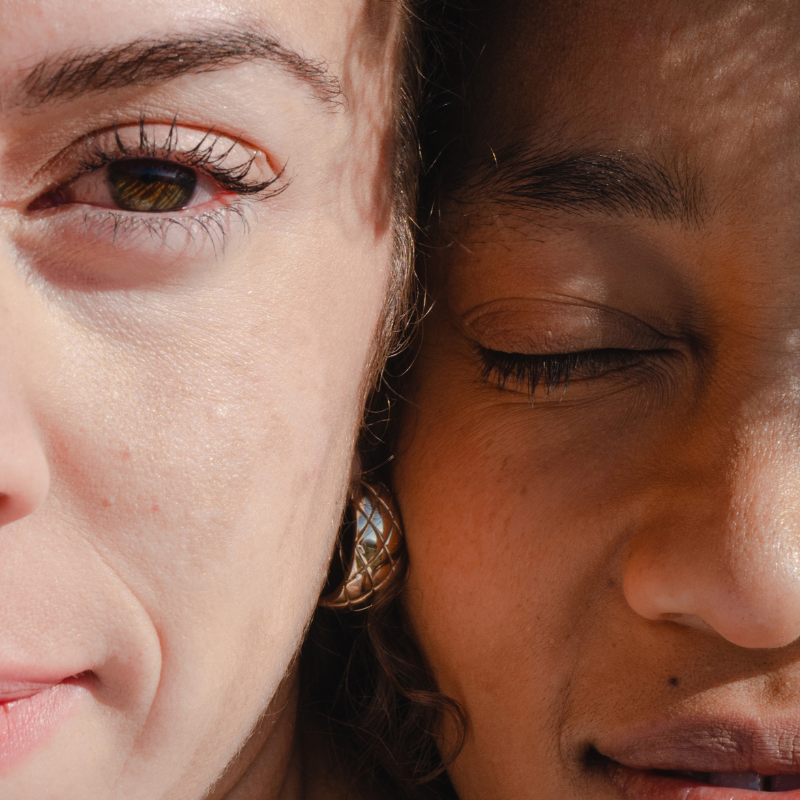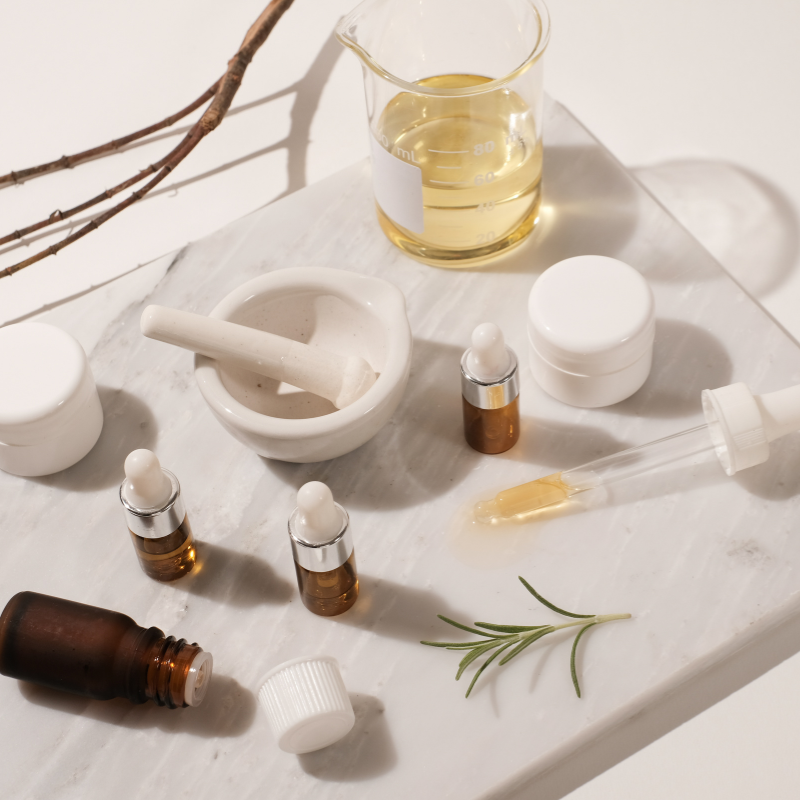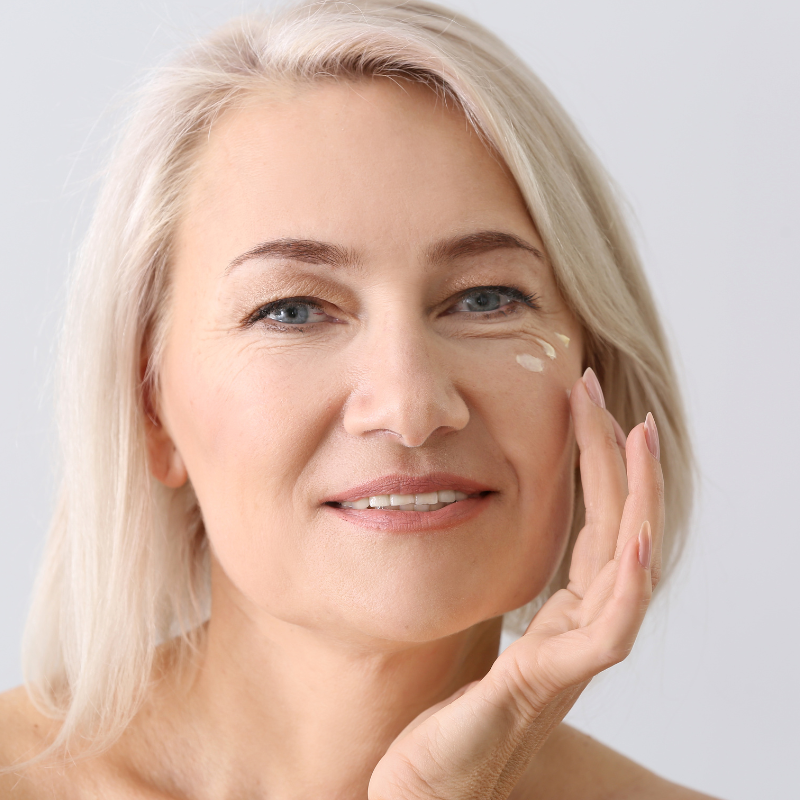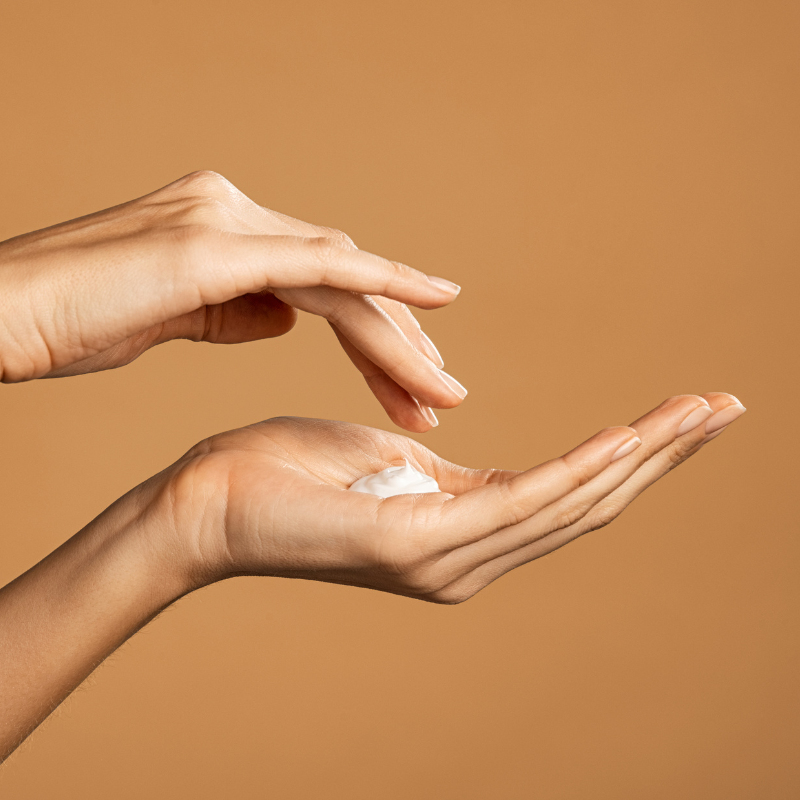What causes premature aging, and how do I prevent it?
by Deborah Duffey, Chief Product Development Officer and President February 11, 2021

Aging might be inevitable, but it is manageable—especially when it comes to skin. Despite our wishes that it stay smooth, firm, and unblemished forever, your skin is constantly working to stay healthy and strong to protect you from outside elements, and over time it can begin to break down.
But what actually causes all the typical markers of aging? Why does skin begin to thin, and why do fine lines show up where skin once bounced back? By understanding the factors that actually cause aging, we can begin to build up our defenses against them and even repair damage that’s already occurred. With just a little care, it’s possible to rewrite your skin’s story.
Ahead we’ll discuss what aging is, what exactly causes aging—both internally and in the environment, along with all the ways that these factors can be mitigated. We’ll also cover which products are best for anti-aging and how to choose the right ones. Aging might seem complicated, but by targeting a few of the major causes, you’ll find achieving your skin goals comes easier.
What is skin aging?
Let’s start by taking a look at what skin aging actually is. While environmental factors and lifestyle can accelerate or slow down how your skin ages (all factors we’ll cover soon), biological changes in the body cause skin to change no matter how we behave or what products we apply to skin. Starting as early as the 20s, collagen—the protein that makes up skin and helps us look youthful as children—starts to decrease and continues to do so as the years go on. Natural exfoliation slows down in our 20s, too, which causes skin cells to accumulate more than it did in the past. In women, menopause decreases estrogen levels, which further dries and thins skin. All of these, plus the natural effects of time and gravity, cause skin to age.
When we talk about skin aging, we’re mostly discussing the ways skin changes visually. You might notice skin changing in these ways:
Fine lines and wrinkles
Fine lines begin in areas with a lot of movement, like on our forehead or around our mouth, but over time these fine lines become further etched into skin as the body slows collagen production. Eventually, they can show up in other areas due to loose skin. Wrinkles appear naturally as we age, but they can also be deepened or appear in uncommon spots due to the way we sleep or if we pull at the skin too often.
Discoloration
Discoloration can appear as sunspots, scars, melasma, and general uneven skin tone. Skin may appear more red or look blotchy. It can also appear discolored because skin becomes thinner, which allows veins and capillaries to peek through.
Texture
When skin doesn’t naturally exfoliate itself as quickly as it once did, cells build up and cause skin to appear more irregular in texture. Texture can also be from scars acquired over time, or from growths like moles or skin tags.
Dryness
Slower exfoliation can cause skin to feel drier, and so can changing hormones during menopause. Thinning skin can make skin seem dry, as can the natural slowing in oil production and ability to hold on to moisture.
Laxity and thinning skin
Less collagen means thinner skin, and less elastin to hold it together. Combined with gravity, skin begins to lose its “tightness.” The jawline, chin, and neck can look especially loose as fat pockets under skin disappear and everything seems to fall.
While these are mostly unavoidable outside of intense, professional treatments—or major surgery—there is a lot you can do at home to both prevent and repair aging skin. You might not be able to completely prevent every fine line, but the right steps can give you control over the level of aging that shows up on skin.
What causes premature skin aging, and how do I prevent it?
Intrinsic aging causes remain mostly unavoidable, but a major—and controllable—cause of aging comes from everyday living. These are the things that our skin comes into contact with often and that affect it directly. Skin can also be affected indirectly by how we live and our overall health.
Let’s take a deeper look at some of the biggest factors that contribute to aging, and what exactly you can do to prevent them or mitigate their damage.
The sun and UV radiation
There’s an oft-mentioned statistic that says the sun causes 90% of skin aging, so when it comes to getting the most results with the least effort, this is the number one place you should focus your attention. The sun ages skin with its ultraviolet light. This radiation damages skin at the cellular level, which ultimately leads to all the signs of aging we’ve already covered. We’ve written extensively on the sun and skin, read more here. If the only step you take to care for your skin is applying sunscreen, you’ll be well on your way to preventing major premature aging. Plus, along with other protection measures, applying sunscreen can also prevent skin cancer.
Pollution and air quality
The environment—and more specifically the air—of the area where you live can be a large factor in the health of your skin. Car exhaust, nearby factories, fires, and particulates in the air all directly affect skin. Besides making skin dirty, this pollution also creates something called oxidative stress. This oxidative stress damages skin cells and leads to premature aging. (The sun and our lifestyle can also cause oxidative stress.)
Antioxidants are key to preventing damage from pollution. They not only form a barrier on your skin, but they also decrease the number of damaging free radicals. Antioxidants can actually repair skin, too, so they are a smart choice to include in any anti-aging skincare routine.
Lifestyle
How we live has a big impact on our skin. Have you noticed that your skin looks less bright after a night of bad sleep? Or that skin seems less healthy when you’re dehydrated? The impacts of lifestyle can be immediate, but it also has long-term effects on how skin appears and ages.
Some of the biggest lifestyle factors that affect skin health are cigarettes, alcohol, sleep, stress, nutrition, and exercise. By striving for a healthy life, you’re not only supporting your general health but your skin’s health, too.
Genetics
Surprisingly, genes play a very small part in skin aging (some studies have said genes account for around 10% of skin aging). Some people may be more predisposed to wrinkles or discoloration, and others may find their skin stays healthy long after they grow older. But because the other factors covered here, like the sun, lifestyle, and environment, are so powerful, they can undo any luck derived from “good genes.” Similarly, staying healthy and caring for your skin can prevent signs of “bad genes” from showing up.

How to choose anti-aging products
Now that we know what actually causes aging, along with some of the ways it can be mitigated, let’s talk products. Anti-aging products won’t completely stop you from gaining years, but they can have a huge effect on what your skin ultimately looks like and how quickly signs of aging appear. Choosing the right products is key, however.
Not all products marketed as anti-aging are truly meant for the job. While some products can appear to make a difference, whether they plump up skin or smooth fine lines, if those effects are only temporary, then the product cannot actually be anti-aging.
Instead, look for products that make a difference in the long term. Kara Vita follows a principle we call the 6 functions of anti-aging. For us to call a product anti-aging, it must adhere to the following ideals:
● Has antioxidant properties
● Has dermal repair properties
● Increases capillary blood flow
● Provides immuno-stimulation to the skin
● Stimulates the epidermis for new cellular growth
● Moisturizes and softens the skin
Additionally, we like to say that change happens underneath the surface of the skin. By healing our skin cells, we can truly change skin for the better. By using nanotechnology, the ingredients in our skincare products are small enough to penetrate the top layer of skin and begin making changes deep within.
How to use products to reverse signs of aging
If you’re already experiencing signs of aging, the prevention methods mentioned above will go a long way in stopping them from getting worse too quickly. But there are also steps you can take to begin to reverse signs of aging, many of which overlap with those that prevent.
First, sunscreen is imperative. A daily sunscreen—especially if it combines moisturizer and skin-beneficial ingredients like Kara Vita’s—will protect skin from sun damage. And remember, the sun is responsible for nearly all of skin’s premature aging. Without sunscreen, any effort to reverse wrinkles or discoloration isn’t worth it, since those efforts will be undone from the sun’s UVA and UVB rays.
Retinoids are one of the most powerful tools we have to reverse aging. Outside of sun protection, using products with retinoids is one of the most efficient steps you can take towards both preventing premature aging and healing any damage that has already occurred. There are prescription retinoids available, but if you’re new to the ingredient (or just prefer prescription-free products), over-the-counter options are a great choice. Try the Kara Vita Purifying Antioxidant Treatment, which includes retinol along with a host of other anti-aging ingredients.
Speaking of antioxidants, they are also key to reversing signs of aging. You can learn all about how antioxidants work and why they are worth using here, but in short: free radicals, which are unstable atoms that exist both in and outside our bodies—they come from pollution, from the sun, from unhealthy diets, and from smoking. These free radicals cause oxidative stress, which ultimately damages skin. Antioxidants are the antidote. They both repair and protect skin from oxidative stress. You can apply them at any time, but using them in the morning is a good idea to protect skin from pollution. This Balancing Antioxidant Treatment is a good option.
Other basics, like cleansers and moisturizers, also support healthy skin aging. For example, cleansing at the end of the day removes pollutants from the skin, and moisturizers can help skin repair itself by supporting a healthy skin barrier.
By understanding why skin ages along with what exactly causes these changes, it’s easier to find solutions that truly work. The right products can be powerful in transforming skin, but it’s worth remembering that a healthy lifestyle does, too. And while some aging is inevitable, we still have so much power in preventing premature wrinkles, sagging, discoloration, and more.




